Frankie Orrala, our Angler Outreach Program Manager, and staff scientist Dana Murray report on Heal the Bay’s efforts to educate anglers at local piers about sustainable fishing techniques and protecting sharks.
Jan. 27, 2015 — Fresh, salty air whips our faces as we approach a middle-aged man angling on Venice Pier. His eyes are on the water as he reels in his catch. The excitement heats up, as the man uses all his strength and skill to haul in what is turning out to be a big fish.
Encouraging remarks in both Spanish and English come from surrounding anglers on the pier: “Puedes hacerlo!” “It’s so strong!” “You’ve got it!” Helpful hands from other anglers assist the man in catching his 18-inch long kelp bass after a five-minute tussle. If this had been a halibut, it could take 10 minutes to land a good-sized legal catch, and up to 20 minutes to land a prized thresher shark. But most of the time when pier anglers do catch a shark, they throw the animal back in the ocean, followed by cheers from the gathering crowd.
“Oh, that’s a nice fish!” we say as we congratulate the angler on his catch. “What are you going to do with it?” He doesn’t skip a beat, saying with a smile ear-to-ear, “Gracias! I will feed my family with this fish tonight, and share some with my friends.” The subsistence angling community is commonly generous with good catches, parceling out pieces of a large fish to buddies on the pier, or handing over several bonita or mackerel to others who haven’t been so lucky that day.
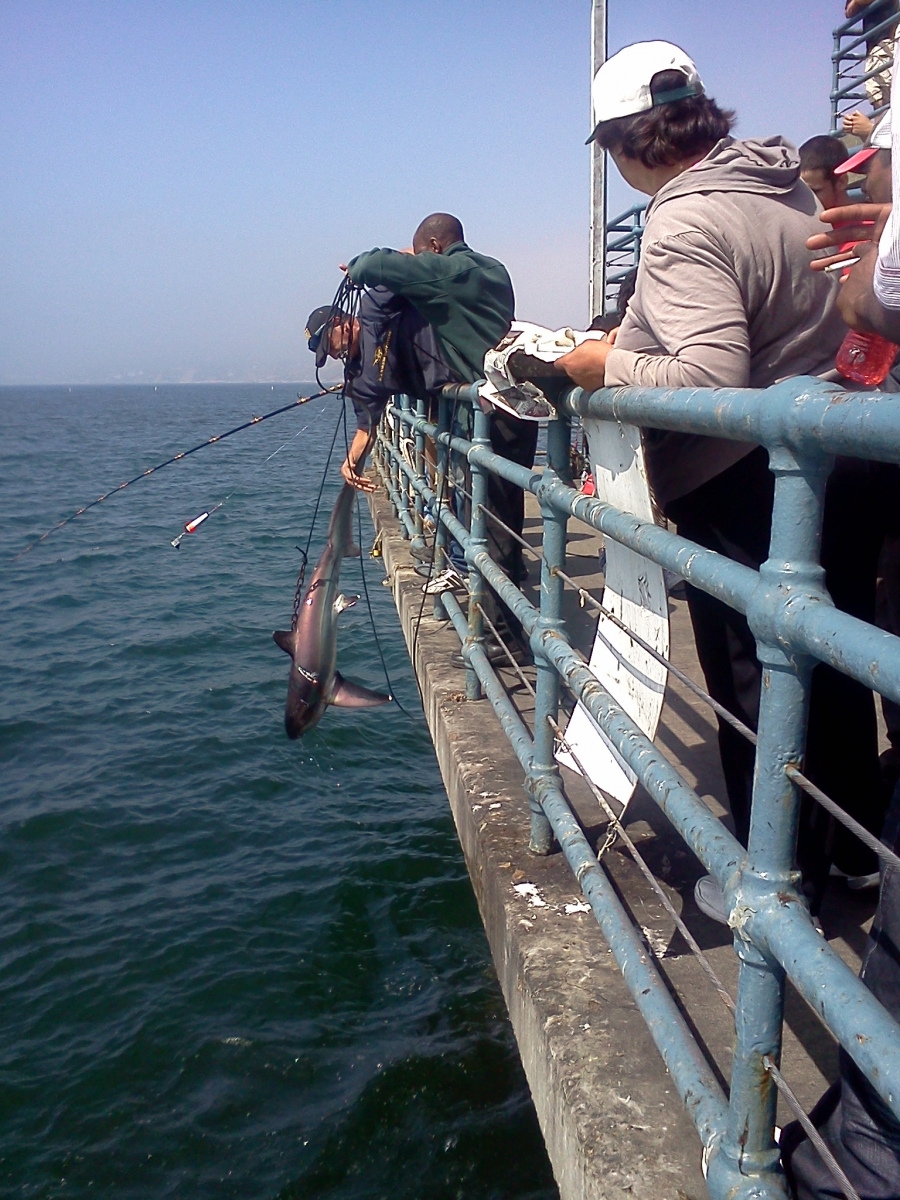
After the white shark bite incident in Manhattan Beach last summer, Heal the Bay decided to build upon our existing Pier Angler Outreach Program, by creating a pilot program to educate pier anglers of Santa Monica Bay about local shark populations and sustainable fishing techniques. Program partners and funders of the pilot project stepped up, including the City of Manhattan Beach, City of Santa Monica, County of Los Angeles, City of Hermosa Beach, and the City of Redondo Beach.
For several months this past fall, our Shark Ambassadors approached anglers, much like in the scene above, to educate fishermen and collect survey information. Through our outreach, we shared newly developed educational materials focused on responsible fishing techniques, how to avoid catching large sharks and what to do if a shark is caught. Through survey questions, we also collected information on demographics, targeted species, caught species and other recreational activities at all Santa Monica Bay piers.
Besides fishing, our study also looked at many other recreational activities that occur near the piers. According to our research, Manhattan, Hermosa and Venice piers all have a high potential for interaction among anglers, surfers and swimmers. While studying piers from September to December 2014, we found that Venice Pier attracts the most anglers to fish in our Bay, followed by Santa Monica and Redondo Beach Piers. Some 86% of the people we talked to identified themselves as subsistence anglers and 14% as sport anglers. Municipal piers are popular for subsistence anglers who fish to feed themselves and their families. This is because piers are easily accessible and are one of the only places in California where people do not need a fishing license, which makes it more affordable.
We also found that the only piers with sport anglers targeting sharks in our study were on Malibu and Venice Pier. Venice Pier anglers are represented by both subsistence and sport anglers targeting sharks; whereas Malibu Pier’s anglers targeting sharks are entirely sport anglers.
It may be surprising that our outreach team didn’t encounter any sport anglers targeting sharks on the Manhattan Beach Pier, where the issue originated. However, this could be because we did not survey piers at night due to safety, and our data presents the voluntary survey responses as given by the anglers. There may be truly fewer anglers out there targeting white sharks, given the high profile white shark incident. Or perhaps not all anglers disclosed their catches. Regardless, it stands that the incident in Manhattan Beach over the Fourth of July weekend in 2014 is likely a singular incident. And one that we hope we don’t see again in our Bay.
If you want to dive in deeper with the details of this program, please read the results of our Shark Ambassador Program pilot program in this report.
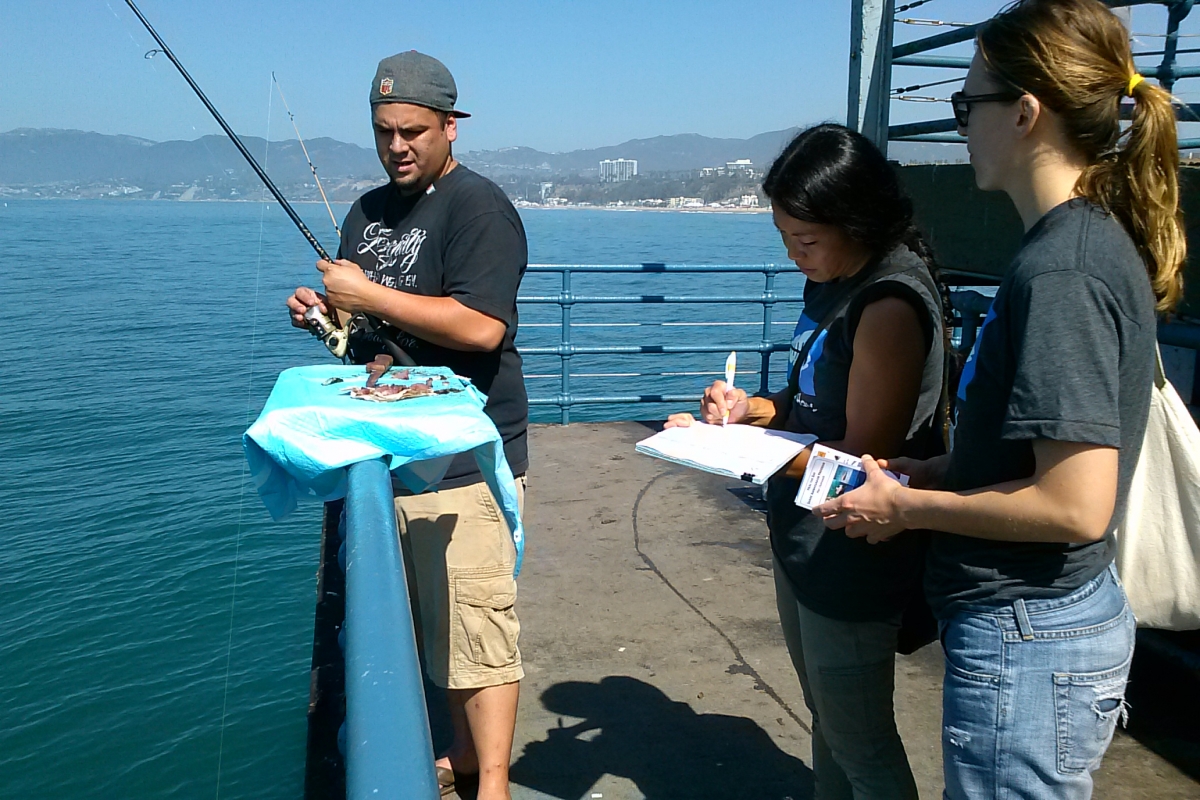 Our Shark Ambassadors talk with an angler at the S.M. Pier.
Our Shark Ambassadors talk with an angler at the S.M. Pier.





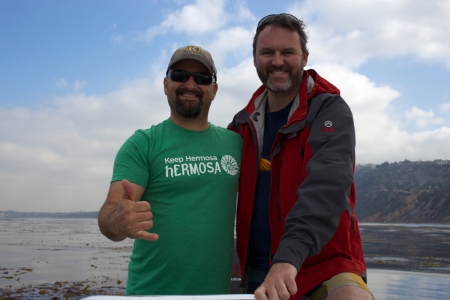 Hartley, right, exploring PV Peninsula with our senior aquarist Jose Bacallao
Hartley, right, exploring PV Peninsula with our senior aquarist Jose Bacallao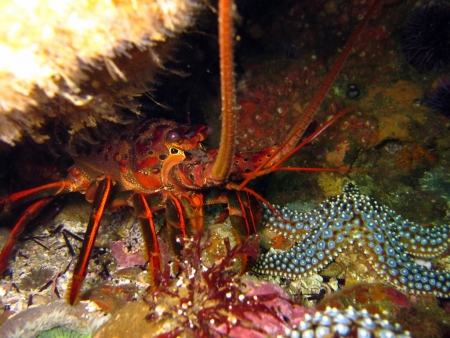 Spiny lobsters are most active night, posing some challenges for divers.
Spiny lobsters are most active night, posing some challenges for divers. A white shark takes the bait in Shark Alley off the coast of South Africa.
A white shark takes the bait in Shark Alley off the coast of South Africa. A white shark breaching.
A white shark breaching.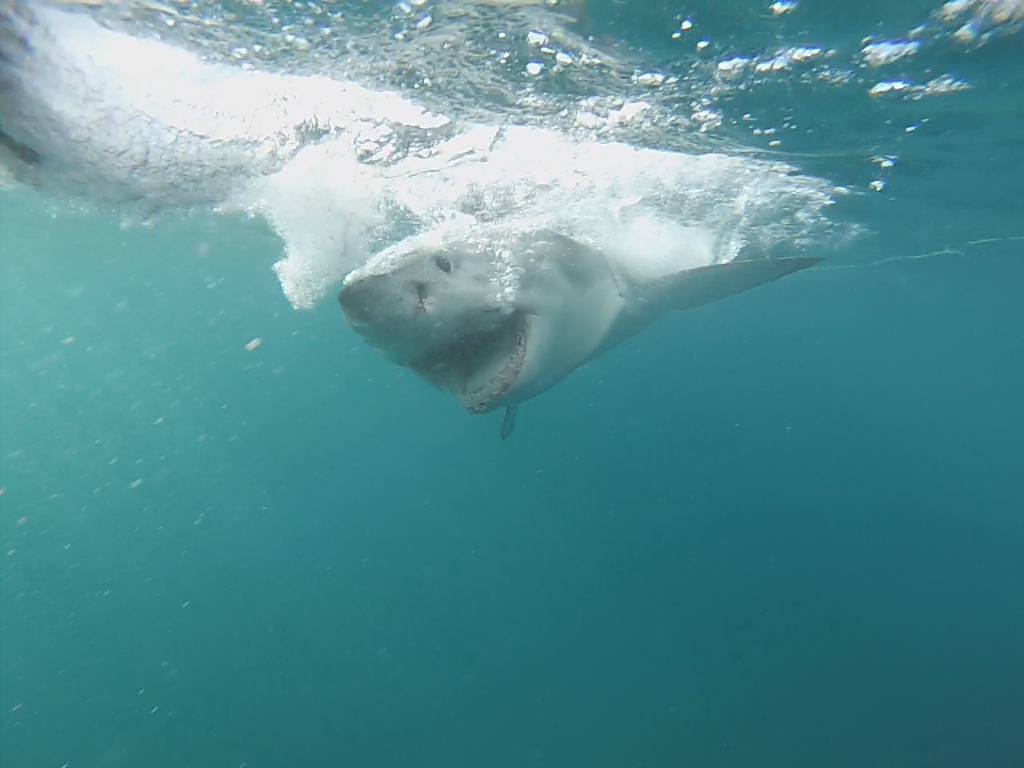 From inside the shark cage!
From inside the shark cage!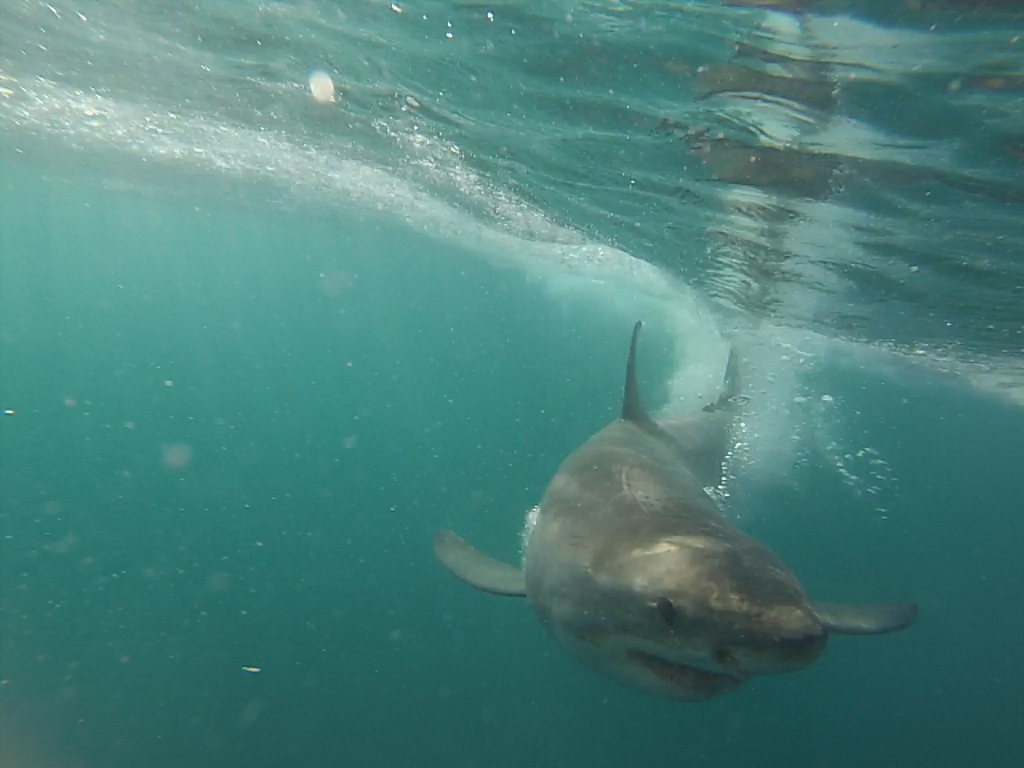 Still safely in the cage.
Still safely in the cage.
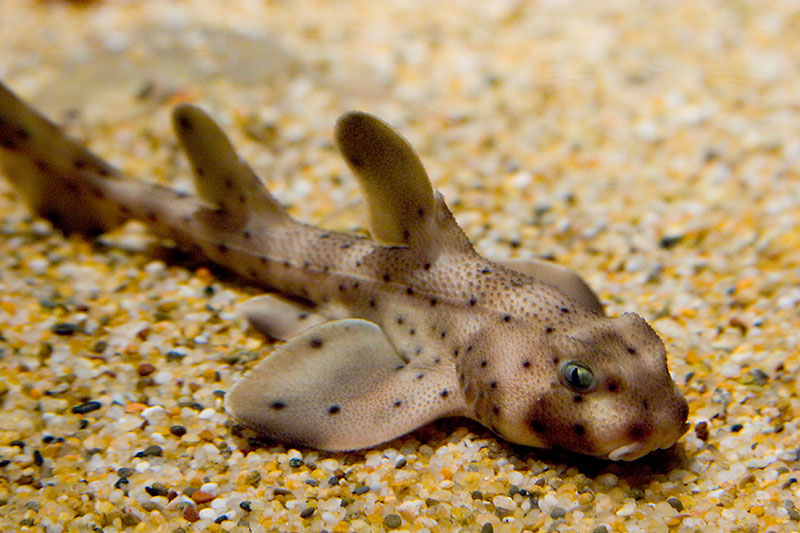 I cannot imagine what that little shark thought about its first kiss — but I loved it. I won’t do it again. I promise to hold back, because honestly I’m pretty sure that horn shark was pretty upset about the whole incident. So I encourage you to love sharks as much as possible but try to restrain yourself when you feel a “Kiss Attack” coming on. If you are in need of your shark “fix” then I very much encourage you to visit us at the Santa Monica Pier Aquarium, where you’ll get an up close encounter with horn sharks, swell sharks and leopard sharks. See you soon and feel free to ask for me by name — the Shark Kisser!
I cannot imagine what that little shark thought about its first kiss — but I loved it. I won’t do it again. I promise to hold back, because honestly I’m pretty sure that horn shark was pretty upset about the whole incident. So I encourage you to love sharks as much as possible but try to restrain yourself when you feel a “Kiss Attack” coming on. If you are in need of your shark “fix” then I very much encourage you to visit us at the Santa Monica Pier Aquarium, where you’ll get an up close encounter with horn sharks, swell sharks and leopard sharks. See you soon and feel free to ask for me by name — the Shark Kisser!